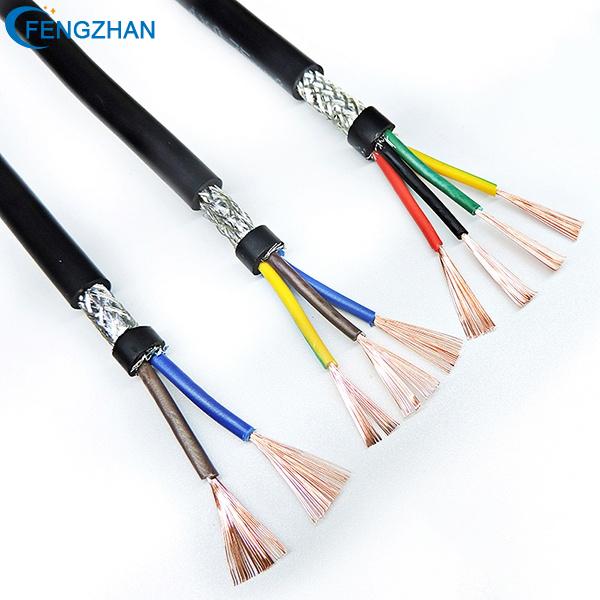One end of the shielded wire of the UL electronic wire is grounded, and the other end is left floating. When the transmission distance of the signal line is relatively long, the potential of the two grounding points may be different due to the different grounding resistances at both ends or the current in the PEN line. Therefore, in this case, one point is generally grounded, and the other end is suspended, which can avoid the formation of such interference. Ground shielding at both ends is better, but signal distortion will increase.

Please note: The two layers of shielding should be mutually insulated and isolated shields! If not insulated from each other, it should still be regarded as a single shield!
The principle is: 1. One end of the single-layer shield is grounded, and no potential difference is formed. It is generally used for anti-static induction. 2. Double-layer shielding, both ends of the outer shield are grounded, and one end of the inner shield is grounded at the same potential. At this point, the outer shield induces a current due to the potential difference, thus generating a magnetic flux that reduces the strength of the source magnetic field, thereby substantially canceling the voltage induced without the outer shield.
If it is to prevent electrostatic interference, it must be grounded at a single point, whether it is a one-layer or two-layer shielding. Because the electrostatic discharge speed of single-point grounding is the fastest.
1. There is strong current interference outside, and single-point grounding cannot meet the fastest discharge of static electricity.
If the cross-sectional area of the grounding wire is large enough to ensure fast discharge of static electricity, it should also be grounded at a single point. Of course, if that's the case, there's no need to opt for two layers of shielding.
Otherwise, two layers of shielding are necessary. The outer shielding is mainly to reduce the interference intensity, not to eliminate the interference. At this time, it must be grounded at multiple points. Although it cannot be put out, it must be weakened as soon as possible. To weaken, multi-point grounding is the best choice. For example, the cable tray in the enterprise is actually the outer shielding layer, which must be grounded at multiple points. The first line of defense is to reduce the intensity of the interference source. The inner shielding layer (in fact, you will not buy double-layer cables, generally the outer layer is the cable tray, and the inner layer is the shielding layer of the shielded cable) must be grounded at a single point, because the external strength has been reduced, discharge as soon as possible to eliminate interference That's the inner purpose.
2. Safety requirements such as external electric shock and lightning protection.
In this case, two layers of protection are required. The outer layer is not used to eliminate interference, but for safety reasons. To ensure the safety of people and equipment, multiple points must be grounded. The inner layer is to prevent interference, so it must be grounded at a single point.
Contact: Lynn Long
Phone: 0086 13640200141
E-mail: lynn@fzwires.com
Whatsapp:0086 13640200141
Add: No. 19, Minye Street, Zhufoling Community, Tangxia Town, Dongguan City, China